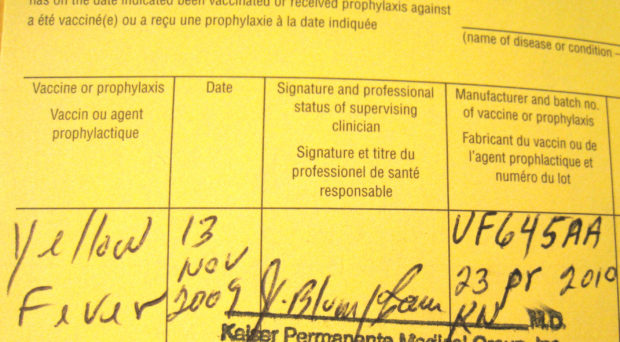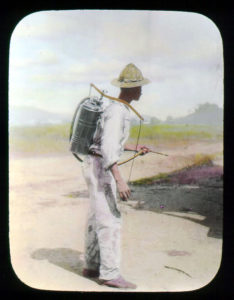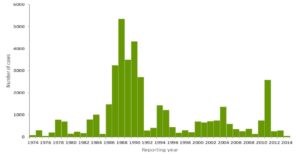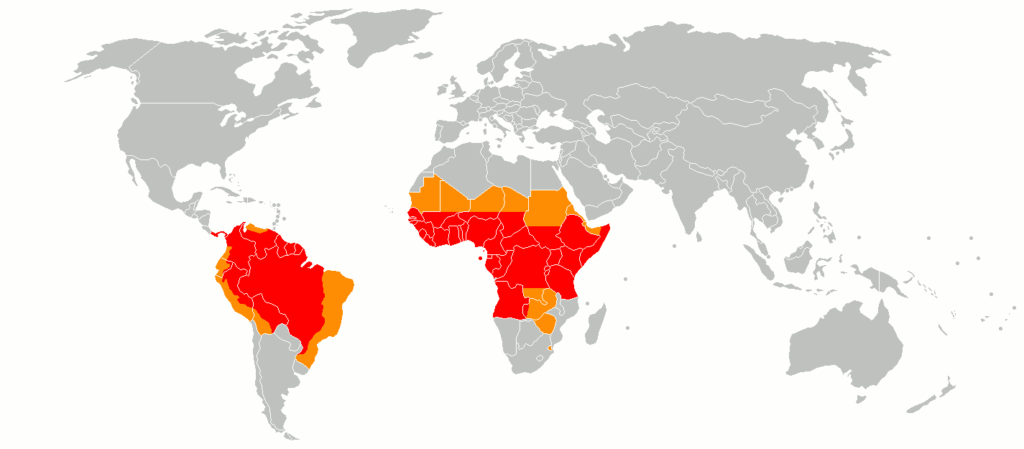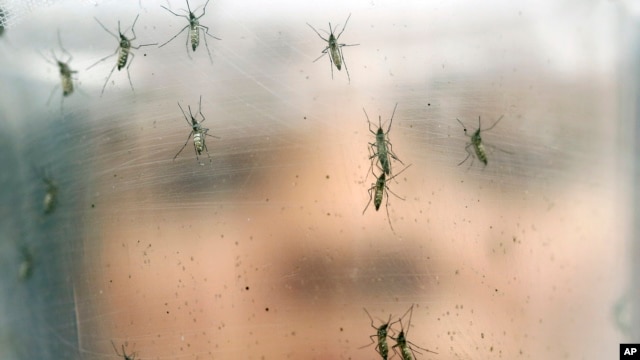GENEVA, Switzerland - World Health Organization issued the latest yellow fever situation report today.
Summary:
Angola: 3625 suspected cases
In Angola, as of 8 July 2016 a total of 3625 suspected cases have been reported, of which 876 are confirmed. The total number of reported deaths is 357, of which 117 were reported among confirmed cases. Suspected cases have been reported in all 18 provinces and confirmed cases have been reported in 16 of 18 provinces and 80 of 125 reporting districts.
Mass reactive vaccination campaigns first began in Luanda and have now expanded to cover most of the other affected parts of Angola. Recently, the campaigns have focused on border areas. Despite extensive vaccination efforts circulation of the virus persists.
Eleven reactive and pre-emptive mass vaccination campaigns are ongoing in several districts in Benguela, Huambo, Huila, Kwanza Norte, Kwanza Sul, Lunda Norte and Uige provinces. Six other mass vaccination campaigns are nearing completion. Mop-up campaigns are being implemented in parts of the provinces of Cunene, Lunda Norte, Uige and Zaire.
Democratic Republic of the Congo: 1798 suspected cases
Other than an increase in the number of suspected cases recently reported, there are no updates regarding the epidemiological situation in the Democratic Republic of The Congo (DRC). For the last three weeks the national laboratory in DRC has been unable to confirm or discard any suspected cases of yellow fever due to technical issues. According to the latest available information (as of 11 July), the total number of notified suspected cases is 1798, with 68 confirmed cases (as of 24 June) and 85 reported deaths. Cases have been reported in 22 health zones in five of 26 provinces. Of the 68 confirmed cases, 59 were imported from Angola, two are sylvatic (not related to the outbreak) and seven are autochthonous.
In DRC, surveillance efforts have increased and vaccination campaigns have centred on affected health zones in Kinshasa and Kongo Central. Reactive vaccination campaigns will start on 20 July, in Kisenso health zone in Kinshasa province and in Kahemba, Kajiji and Kisandji health zones in Kwango province.
The risk of spread
Two additional countries have reported confirmed yellow fever cases imported from Angola: Kenya (two cases) and People's Republic of China (11 cases). These cases highlight the risk of international spread through non-immunised travellers.
Seven countries (Brazil, Chad, Colombia, Ghana, Guinea, Peru and Uganda) are currently reporting yellow fever outbreaks or sporadic cases not linked to the Angolan outbreak.
Vaccination
WHO Strategic Advisory Group of Experts (SAGE) on Immunization reviewed existing evidence that demonstrates that using a fifth of a standard vaccine dose would still provide protection against the disease for at least 12 months and possibly longer. This approach, known as fractional dosing, is under consideration as a short-term measure, in the context of a potential vaccine shortage in emergencies.
Risk assessment
The outbreak in Angola remains of high concern due to:
Persistent local transmission despite the fact that approximately 15 million people have been vaccinated;
Local transmission has been reported in 12 highly populated provinces including Luanda.
The continued extension of the outbreak to new provinces and new districts.
High risk of spread to neighbouring countries. As the borders are porous with substantial cross-border social and economic activities, further transmission cannot be excluded. Viraemic travelling patients pose a risk for the establishment of local transmission especially in countries where adequate vectors and susceptible human populations are present;
Risk of establishment of local transmission in other provinces where no autochthonous cases are reported;
High index of suspicion of ongoing transmission in hard-to-reach areas like Cabinda;
In DRC, the outbreak has spread to three provinces. Given the limited availability of vaccines, the large Angolan community in Kinshasa, the porous border between Angola and DRC, and the presence and the activity of the vector Aedes in the country, the outbreak might extend to other provinces, in particular Kasai, Kasai Central and Lualaba.
The virus in Angola and DRC is largely concentrated in main cities; however, there is a high risk of spread and local transmission to other provinces in both countries. In addition, the risk is high for potential spread to bordering countries, especially those classified as low-risk (i.e. Namibia, Zambia) and where the population, travelers and foreign workers are not vaccinated for yellow fever.
Some African countries (Chad, Ghana, Guinea, Republic of Congo and Uganda) and some countries in South America (Brazil, Colombia and Peru) have reported cases of yellow fever in 2016. These events are not related to the Angolan outbreak, but there remains a need for vaccines in those countries, which poses additional strain on the limited global yellow fever vaccine stockpile.

